ShortHaus Featured Director: Alison Maclean
For our next director in our unintended series on artists-turned-directors, we have… Alison Maclean! This Canadian-born, New Zealand film director originally went to the Elam School of Fine Arts at the University of Auckland to study sculpture. It was only in her final year that she convinced professors to let her create a film toward her degree, resulting in her first short entitled Taunt. Like Akira Kurosawa and Georges Méliès before her, that origin in the fine arts reveals itself in her visual storytelling and her independent, outsider approach to filmmaking.
Alison Maclean’s work focuses on the uncomfortable, the quietly mythical and the ambiguous, contradictory sides of gendered politics. Women young and old seek to defy while men are left wandering and lost. She uses frequent motifs of mirrors and personal grooming to reflect the interior worlds of her characters who are so often trapped and angry in their lives. Dull greens and moody blues paint these worlds, until a swathe of red is splashed across the screen, evoking passion and screaming danger.
The Bride and the Groom(ed)
Cutting hair can be an intimate act, as with any form of touch. We humans thrive on it, and are willing to pay exorbitant amounts into the personal care service industry. A hair cut, complete with a shampoo and an exchange of stories, can be the closest we feel to another human outside of our romantic partners. A parent grooming their child is very intimate and the delicacy with which they treat their child’s scalp says a lot about the trust and care in their relationship. I wouldn’t recommend lice to anyone, and yet I can still remember with a fondness the many late nights of my parents combing through my hair to hunt down those viciously reproductive creatures.
We can see this kind of parental tenderness in Maclean’s Kitchen Sink (1989), where the unnamed woman is faced with a hairy monster she can’t quite understand. While hair on our heads is desired, there’s cultural rules and expectation to all other growths. Regardless of how your hair naturally grows in, you must groom yourself in a particular way or have your masculinity or femininity questioned to the core. And once that hair leaves the body, it’s absolutely disgusting. So not only is this strange creature covered head to toe in thick wiry follicles (a special blend of human and yak hair the on-set wigmaker carefully pieced together), but he was somehow formed by the loose hairs washed away down the titular sink.
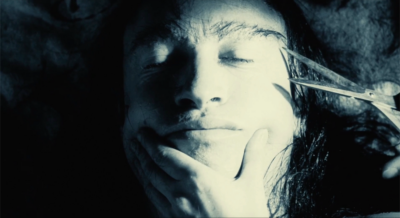
from “Kitchen Sink,” 1989
This woman is justifiably afraid of this unknown, and at first attempts to dispose of it. Eventually, though, she bathes it and delicately shaves and trims away the excess until a strangely normal man is left behind. From this initial act, their relationship is able to grow.
That same tenderness is also present in Crush (1992), although there’s a dangerous undertone brought to the event. Lane mischievously invites Colin to her motel room for a haircut. While she does carry it out, it is first and foremost her goal to break the tension and invite a reciprocal touch. It soon turns into a physical intimacy that sets the plot in motion. Colin’s teenage daughter Angela, who befriended Lane first and quickly fell in love with the older woman, becomes heartbroken by this development. Angela takes her revenge by befriending Lane’s battered friend Christina, who’s left hospital-bound by a car accident that happened while Lane was in the driver’s seat. As Angela grows closer to Christina, we later see a mirroring of that inaugural intimate act as she carefully combs through Christina’s hair over and over again. Angela too has a malicious intent, hoping to turn that friend against Lane as revenge for both breaking her heart and stealing her father from her.
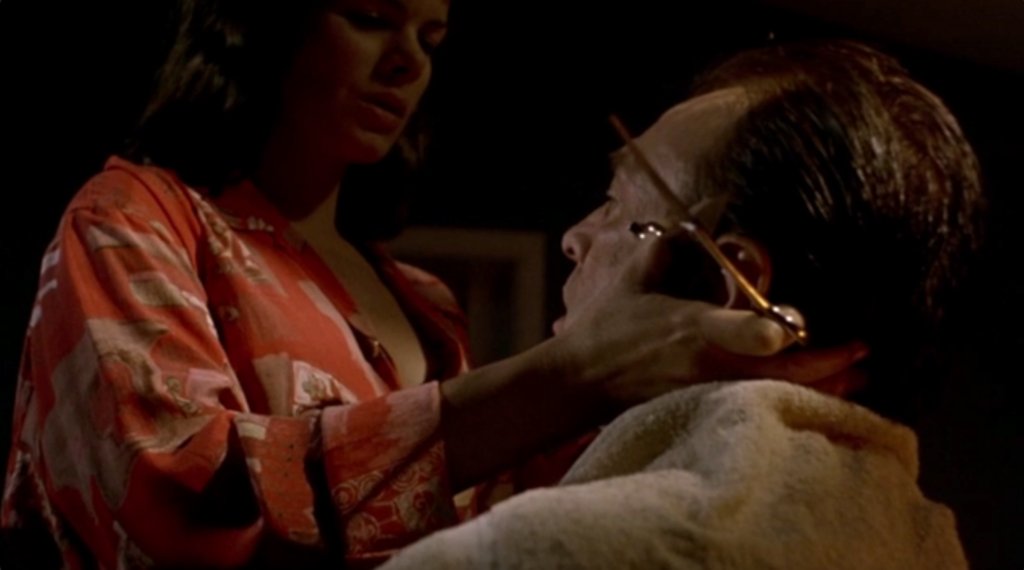
Lane cutting Colin’s hair, “Crush,” 1992
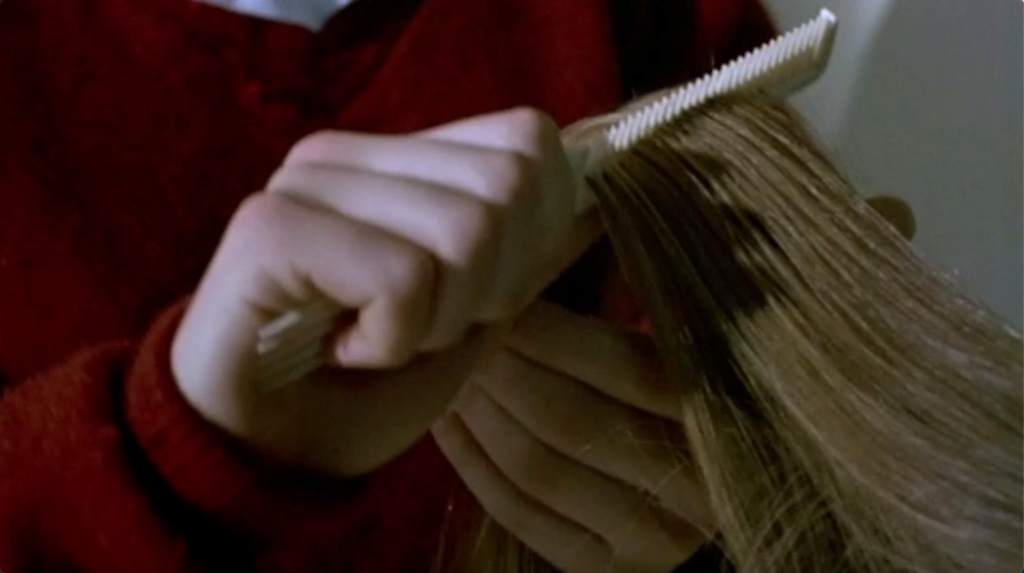
Angela’s hand combs Christina’s hair, “Crush,” 1992
The Looking Glass
Maclean’s obsession with mirrors is nearly as strong as Maya Deren’s in Meshes of the Afternoon (1943)(featured by ShortHaus back in July). In Deren’s surrealist film, mirrors can be seen shattering into the ocean, taking the place of faces, or reflecting off of sharp, shiny knives and reflective disco-ball eyes. It’s not in the least surprising than Maclean lists Deren as one of her top influences.
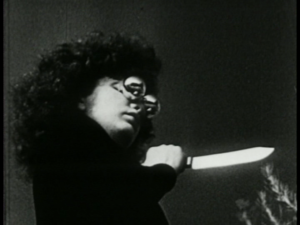
from Maya Deren’s “Meshes in the Afternoon,” 1943
Through mirrors, we evaluate ourselves. It’s not a true picture, and yet it’s all we can rely on to see ourselves. A character gazing at themselves is a well-worn visual that they’re looking inside. It’s never simply that they’re getting ready, applying makeup, getting dressed or checking themselves before they run out the door like we all do. Instead, they’re either contemplating who they’ve become, what terrible events have led them here, or what they’re about to do in response.
In Rud’s Wife (1986), a recently widowed mother, grandmother, great-grandmother is reflecting on her life, almost in documentary form, and showing us the illicit photos her strictly religious husband forbade. After preparing food and checking in on her sick granddaughter, we get just one shot of Rud’s Wife applying makeup before her son and daughter-in-law arrive for dinner. This itself is a defiant act, as her former rugby star, now entitled business-man son remarks that she never gets this dolled up. But the application of lipstick in the mirror is also a preparation for the major conflict: defying her son, who in many ways has replaced his father’s overbearing role. In the middle of dinner she announces that she’ll be skipping Christmas to take a solo cruise around the continent of Asia. Her son is angry and calls her silly for wanting to do such a dangerous, frivolous thing, and she initially placates his protests. But the last shot we see is this golden girl taking her much-deserved vacation, lounging casually on the deck of the ship, content and alone.
In Talk Back (1987) a woman named Jonah working as a radio board operator is forced to take the role of DJ for the night as her boss/lover, Roger, is suddenly called away to be with his wife giving birth in the hospital. Jonah struggles to process this information while she balances entertaining the late night callers, switching the board and trying to figure out what’s going on. After a chaotic series of calls from lonely older women and aggressively weird middle-aged men, she manages to find comfort in one caller, Jim, a recently released ex-con staying in a hotel while he figures out his life moving forward. While Jim is initially hostile, he calms and starts to open up to Jonah, and the conversation markedly shifts when he pauses and turns the focus back to her. This shift is shown visually when his reflection is caught in the hotel mirror. At the same time, Roger is shown to be listening to their conversation on the talk show while in his car, his face reflected in the car mirror. When the conversation sours, Jonah hangs up the phone and plays an ad to give herself a break. She’s then seen gazing in the bathroom mirror, processing the night and her relationship with her boss. For one night, all three are connected, their interior worlds reflected onto one another across the city.
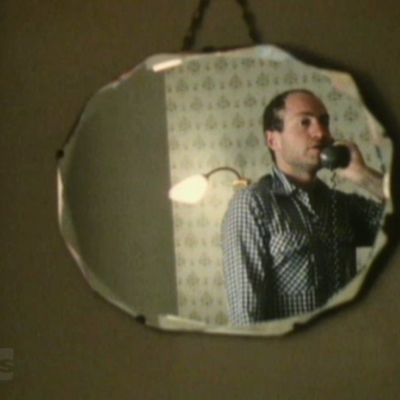
Jim, “Talk Back,” 1987
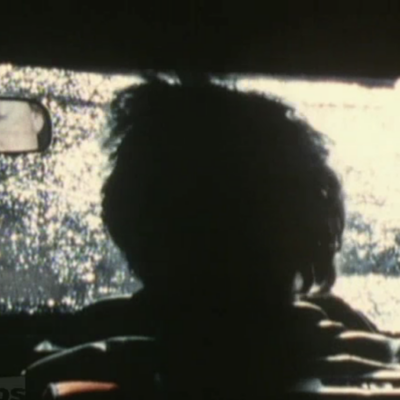
Roger, “Talk Back,” 1987
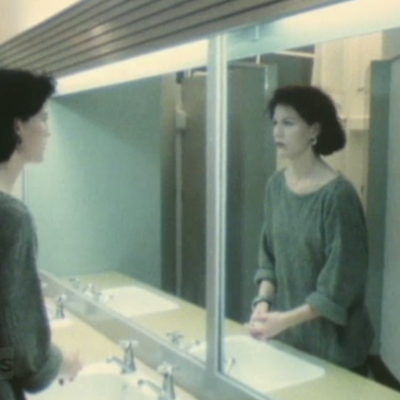
Jonah, “Talk Back,” 1987
In Crush, the intensity of the narrative is constantly reflected back to us. Early on in their friendship, Lane gifts one of her dresses to Angelica. Lane has few clothes at this point, being stranded after the accident with only a small suitcase. A velvety red dress, too old for Angela, as her father later remarks, is a vivid symbol of maturity. Lane holds the dress up to Angela in the mirror and stands by her side, taking the role of a man. Angelica is later seen dancing in front of the mirror, again wearing the dress, as she gets ready for a night out with Lane. The camera slowly zooms closer to the mirror, which is surrounded by toys, and focuses on a photo of Angela’s deceased mother tucked into the frame. This one shot is heavy with the imagery of a lonely teenager, desperate to be seen as an adult yet still clinging to childhood.
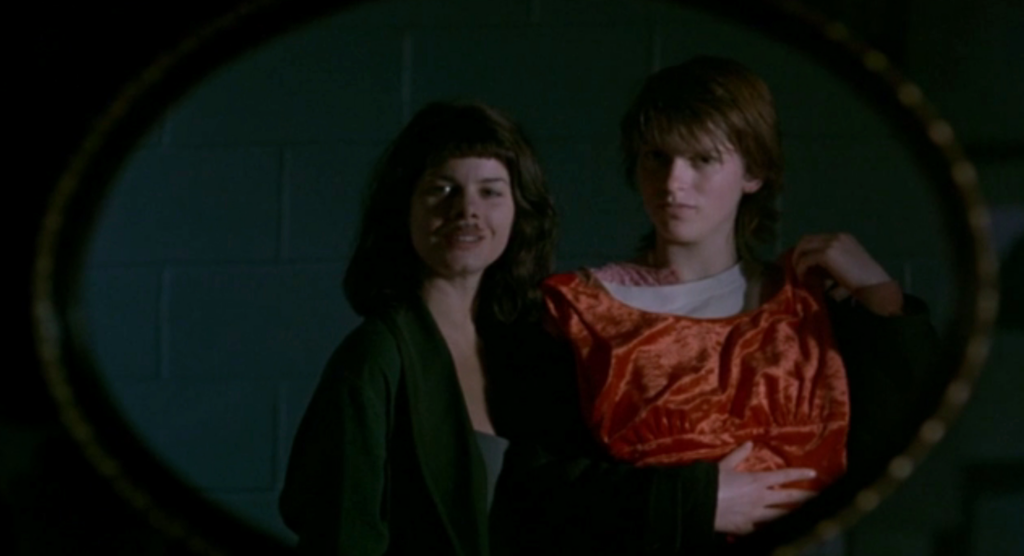
from “Crush,” 1992
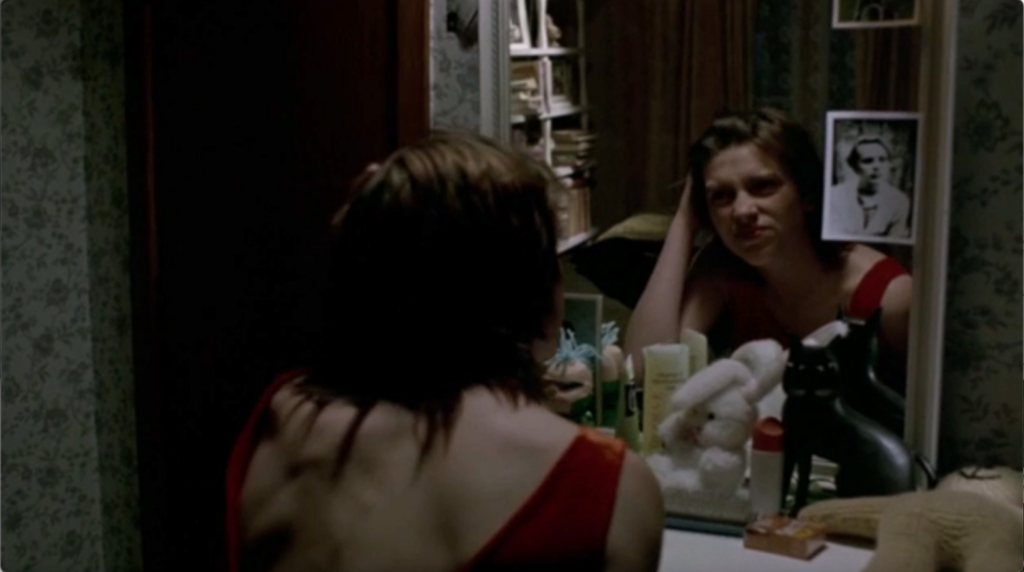
from “Crush,” 1992
In that aforementioned hair cutting, Lane hands Colin a toaster to show him her handiwork, though the reflection is warped and fails to actually show him anything. But this pivotal scene mirrors Colin’s relationship to Lane with that of his daughter’s, where Lane is reflected beside him. And again he mirrors Angela’s desire to look nice for Lane by checking his hair in the mirror while Lane is on her way over. Both are seduced by Lane, both are physically changed by Lane and both are heartbroken by Lane.
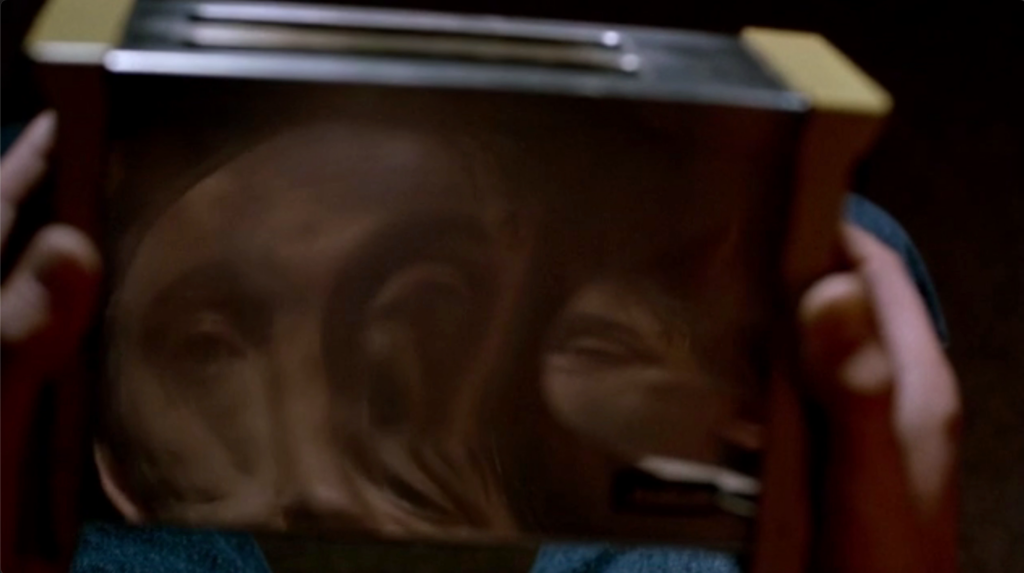
from “Crush,” 1992
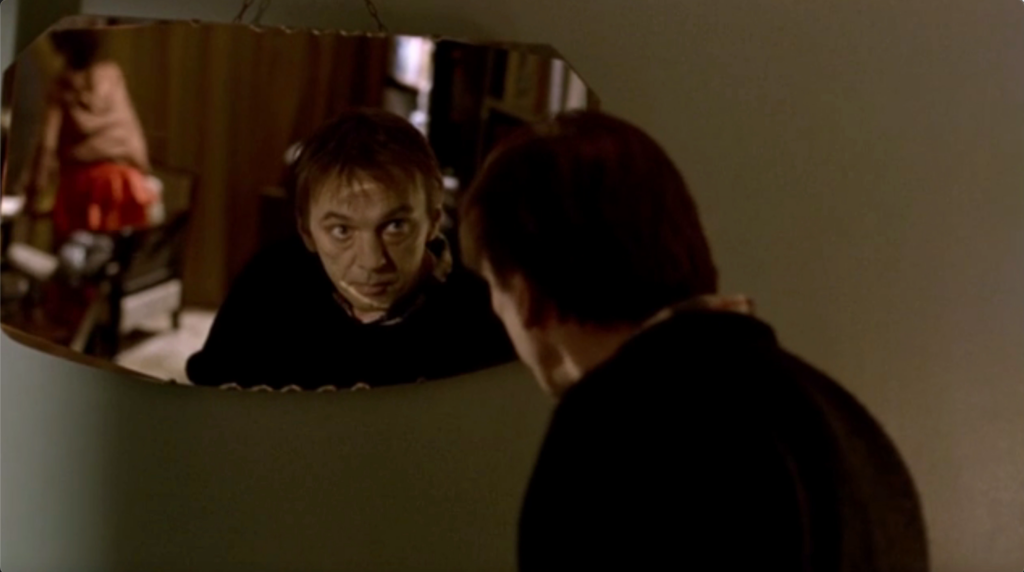
from “Crush,” 1992
Moody Blues, Vivid Reds
Rudimentary color theory tells us that blue is calming, green refreshing and red stimulating. Tint it lighter, and we feel lighter. Shade it darker, and we create a more somber tone. Alison Maclean’s use of color in her films creates a moody atmosphere that always enhances the tenser subject matter and the angsty interiority of insecure characters. But constantly punctuating those blues, greens and grays is vivid red splashed across the screen. Perhaps signaling a femme fatale on the prowl, an angsty teen growing into herself or the passion between ill-fated lovers.
These colors are so clearly juxtaposed in Crush. Lane, Angela and Christina all take turns wearing the color. The car that crashes at the start of the film, that tears Lane and Christina apart and brings their Thelma and Louise story (we’ll be featuring Ridley Scott Nov 7!) to a crashing halt, is of course a vibrant red flying through the rich green scape of New Zealand.
Talk Back, too, navigates the intertwined relationships with color. Roger and Jim use dull green phones while Jonah spends the entire film using a bright red set. The CCTV footage that reveals characters coming and going to the radio station is a blurry, monochromatic teal. Jim’s hotel room is awash with red. These colors draw through lines and highlight contrasts between the characters, setting a consistent emotional tone.
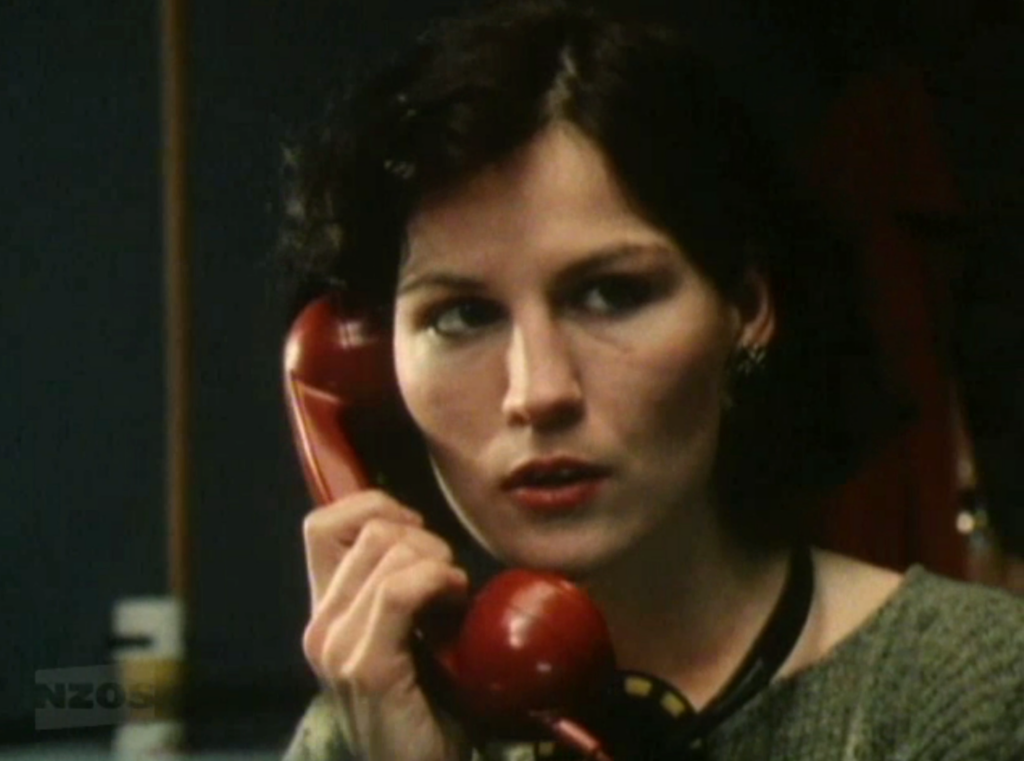
from “Talk Back,” 1987
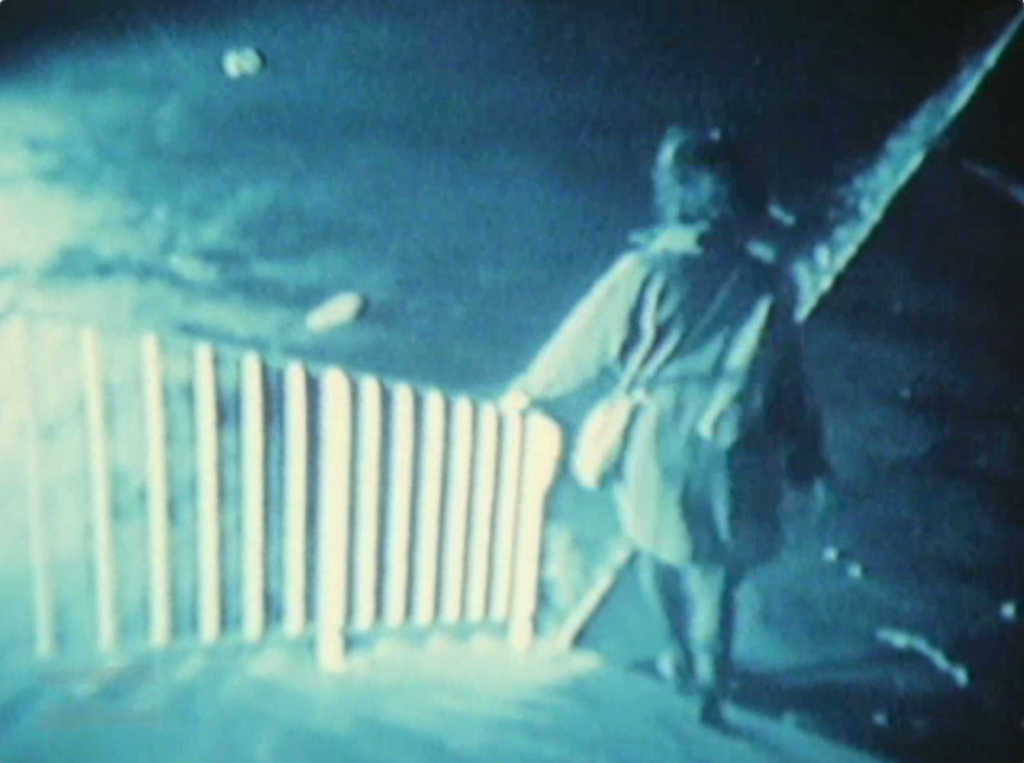
from “Talk Back,” 1987
Being a painter, I could talk about color endlessly, but instead I’ll end with this quote from the recently released Colors of Film: The Story of Cinema in 50 Palettes by Charles Bramesco:
“Even within something as subtle and aesthetically pure as color, there’s still an embedded politics, sometimes explicit and sometimes buried in subtext. A genius in his final days adopts blue as a figurative and literal way of seeing the world, as well as an act of protest; a queer satire mocks retro notions of femininity by turning up the pink until it’s garish enough to serve as a parody of itself… Cinema deals in visual information, with reams of commentary and subjectivity encoded in curtains, a shirt, or other unobtrusive detritus of the everyday. Color is the perfect hiding place for significance, most powerful when left unstated.”
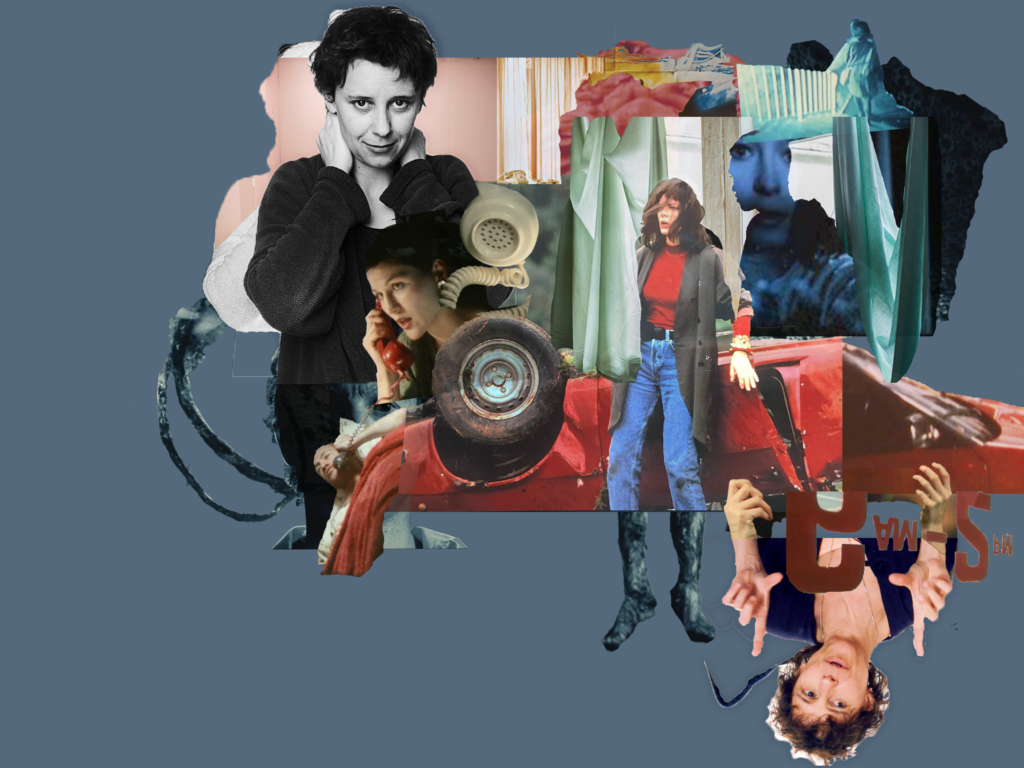
ShortHaus Cinema will be meeting to discuss the works of Alison Maclean on October 3. Her short Kitchen Sink and two of her features, Crush and Jesus’ Son are available to watch on Kanopy. Other shorts are also available to watch for free from New Zealand on Screen, as well as some interviews that were used as reference in this post.
